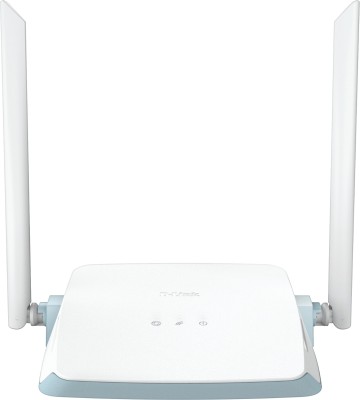
D-Link 54 mbps DWL-3200AP Wireless PoE Access Point (Grey, Black)
Price: Not Available
Currently Unavailable
Warranty
1 Years Manufacturer Warranty
Highlights
- 54 mbps
Description
T he D-Link AirPremier DWL-3200AP is a powerful and reliable wireless access point for
business-class enterprise environments. Designed for indoor installation, this access point
provides secure options for network administrators to deploy a highly manageable and extremely
robust wireless network. This access point supports Power over Ethernet (PoE) and provides two
high-gain antennas for optimal wireless coverage.
PoE Support. Enclosed in a plenum metal chassis, the DWL-3200AP adheres to strict fire codes
and ensures complete safety. For advanced installations, this high-speed access point has an
integrated 802.3af Power over Ethernet (PoE) support to allow installation in areas where power
outlets are not readily available.
Up to 108Mbps Wireless Speed. The DWL-3200AP delivers extremely reliable wireless
performance with standard 802.11g wireless throughput rates of up to 54Mbps. It has the added
capability of reaching maximum wireless signal rates of up to 108Mbps (Turbo mode) powered by
D-Link 108G technology. At the same time, the DWL-3200AP remains fully compatible with the
IEEE 802.11b and 802.11g standards.
Advanced Wireless Security. Since wireless security remains a strong concern among businesses,
the DWL-3200AP provides the latest wireless security technologies by supporting both WPAEnterprise
and WPA2-Enterprise to ensure complete network protection. In addition, the DWL-
3200AP currently comes 802.11i-ready to fully support industrial grade wireless security.
Additionally, the DWL-3200AP supports Network Access Protection (NAP), which is a feature of
Microsoft Windows Server 2008. NAP allows network administrators to define multiple levels of
network access based on the needs of individual clients. If a client is identified outside of their
access area, the client will be automatically brought back to their permitted network access level.
WDS (Wireless Distribution System) Support. To maximize total return on investment, the DWL-
3200AP can be configured to operate as an access point (AP mode), a point-to-point bridge or a
point-to-multipoint bridge (WDS mode). In the WDS/Bridge mode, the DWL-3200AP
communicates only with wireless bridges, without allowing for wireless clients or stations to access
them.
Increased Network Flexibility and Efficiency. The DWL-3200AP supports multiple SSIDs, allowing
you to separate applications based on security and performance requirements. You can enable
encryption and authentication on one SSID to protect private applications and no security on
another SSID to maximize open connectivity for public usage. Multiple SSIDs means you can mix
and match the broadcasting of SSIDs. For public Internet access applications, you can broadcast
the SSID to enable user radio cards to automatically find available access points. For private
applications, you can disable SSID broadcast to prevent intruders from identifying your network.
You can set the number of users that can associate via a particular SSID to control usage of
particular applications. This can help provide a somewhat limited form of bandwidth control for
particular applications.
* Maximum wireless signal rate based on IEEE standard 802.11g
specifications. Actual data throughput may vary. Network
conditions and environmental factors can lower actual data
throughput rate.
Cost Saving and Mobile Applications. By
supporting multiple SSIDs, the DWL-3200AP
allows you to logically divide your access point
into several virtual access points all within a
single hardware platform. Rather than having two
separate WLANs, you can deploy one access
point to support more than one application, such
as public Internet access and internal network
control to increase flexibility and keep costs
down.
Advanced Network Management. Network
administrators can manage all the DWL-3200AP's
settings via its web-based configuration utility or
with Telnet. For advanced network management,
the administrators can use D-Link's AP Manager
or D-View SNMP management module to
configure and manage multiple access points
from a single location. In addition to a streamlined
management process, network administrators can
also verify and conduct regular maintenance
checks without wasting resources by sending
personnel out to physically verify proper
operation.
Read More
Specifications
In The Box
|
General
| Brand |
|
| Model |
|
| Color |
|
Networking
| Wireless Speed |
|
| Frequency Band |
|
Compliance
| Supported Standards |
|
Warranty
| Warranty Summary |
|
| Covered in Warranty |
|
| Not Covered in Warranty |
|
| Warranty Service Type |
|
Be the first to ask about this product
Safe and Secure Payments.Easy returns.100% Authentic products.
Back to top


